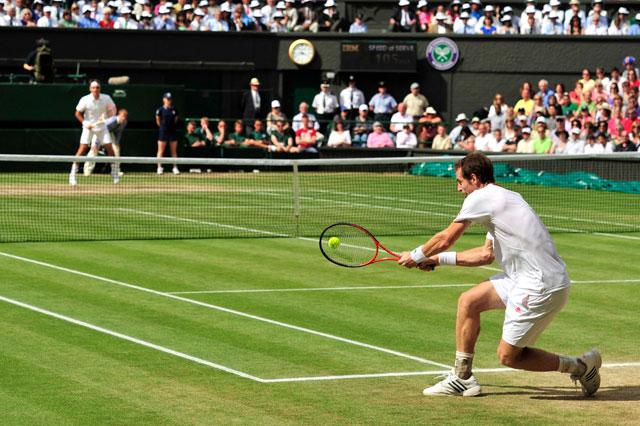You are here
Everything’s connected. What is left?
By Jean-Claude Elias - Jul 03,2014 - Last updated at Jul 03,2014
The time is upon us when we won’t be able do a thing without connectivity and an app that goes with it. From drinking a cup of coffee to heating a dish in the microwave oven, brushing your teeth or checking your car’s maintenance log file, everything is moving toward getting connected one way or another; slowly but surely. That’s what is referred to as The Internet of Things (IoT), one of the most recent concepts and terms added to the IT jargon.
Seeing an electronic device fitted with a connection to the Internet may be more or less expected. However, having an otherwise dummy, inert object behave like an intelligent, connected device would understandably surprise the most blasé, the most tech-savvy among us. French tennis racquet maker Babolat wants to surprise you this way.
For a few months now Babolat has been manufacturing what may well be the most innovative little piece of high-tech, the connected tennis racquet. If you’re wondering why on earth a tennis racquet would want to be intelligent, you may be underestimating the industry.
Babolat’s futuristic racquet is fitted with an array of sensors that detect and record every move, every hit the player would make during a given session. All that the player has to do after the session is to point the racquet, wirelessly (yep, Bluetooth again), to a laptop, a tablet or a smartphone that runs under either iOS or Android, to have the so-recorded set of data be transferred to the device through the software app that comes with the racquet, and then be smarty analysed. You will then know how many forehands, backhands, smashes, spins, drop shots, serves you have played and the power you have applied while playing each, the wrong moves, and so forth. Can you dream of a better coach? What great way to improve your play!
The company has not yet disclosed all details about its high-tech racquet and one can understand that. It had to take up a few challenges here. How do you add all these sensors, and a wireless connection too, without altering the weight of the racquet, while at the same time maintaining the playability, the balance that players are used to? How can all electronics placed inside take the kind of blows that masters like Roger Federer or Rafael Nadel inflict on the racquet? It is definitely a first, a technological prowess. Many of the world’s top players, Nadal included, have been experimenting with the connected racquet for about six months now.
It is now commercialised, and while being on the expensive side, at about $600 to $700, it is in no way technology that one cannot afford, especially if you happen to be a professional player or simply a passionate amateur.
If the connected racquet is the most striking example today of the IoT, there are other objects that are following the same path on the road to connectivity and app-driven behaviour.
The KICK portable light for photo and video shooting is another smart object that you can use instead of the traditional flashgun, to illuminate your shooting of stills or of videos. Its LED light source is very powerful, to start with, but what makes it different here is that you can control the light, the intensity, the effects and so forth with the app that comes with it and that, just like the app for the smart racquet above, works with Apple’s iOS and Google’s Android.
KICK is presented as a portable studio light for photo and video and has a $150 price tag attached to it on the web. It may not come as a revolution in the art of lightning but will certainly enhance the shooting experience for most amateurs and maybe for a few seasoned pros as well.
Related Articles
Rafael Nadal’s new high-tech tennis racquet looks and feels like his old one. Except for the on-off switch.
MELBOURNE — Daniil Medvedev faces a hefty fine after mangling his racquet and a net camera in an epic temper tantrum before battling through
DUNBLANE, United Kingdom — In a quiet corner of the peaceful town of Dunblane in central Scotland stands the unassuming tennis club that lau


















